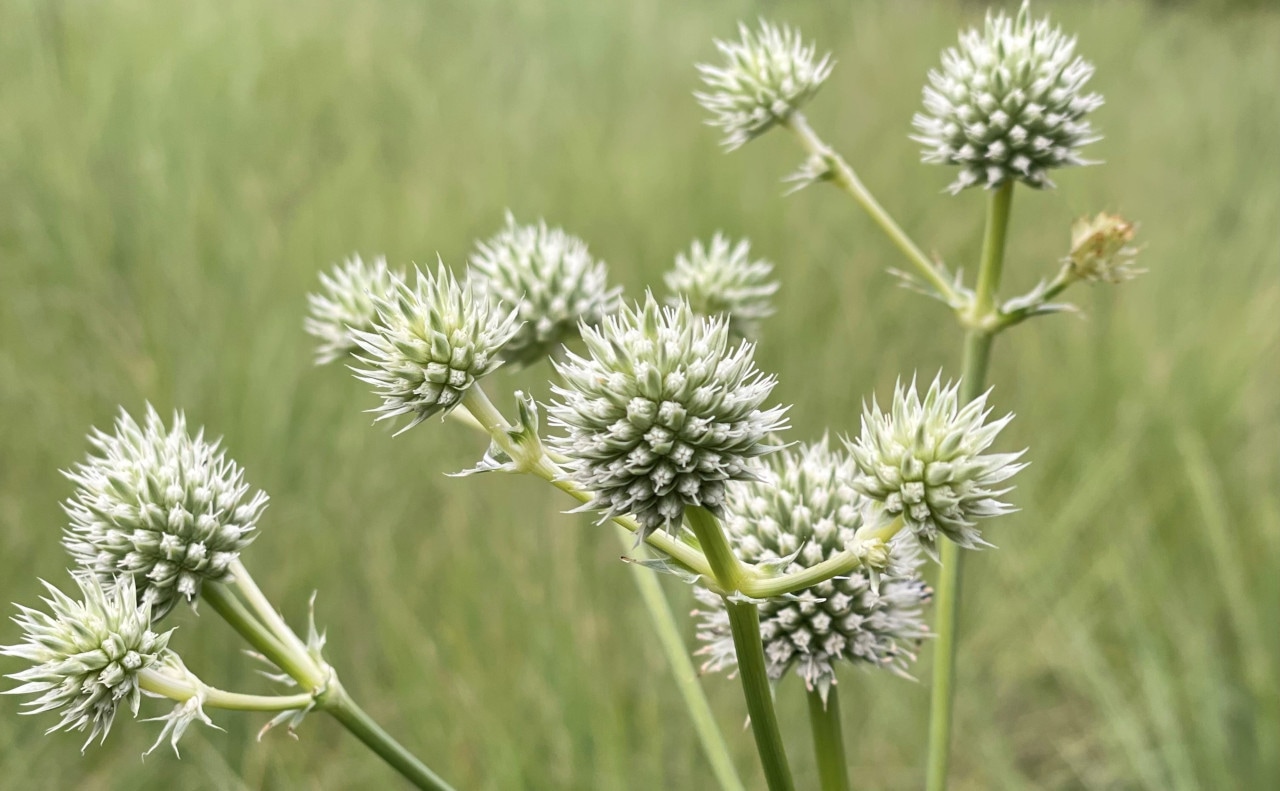Landscaping with Native Plants
[[translate(episode,'title')]]
[[translate(episode,'audioCredit') || translate(episode,'credit')]][[translate(episode,'title')]]
[[translate(episode,'audioCredit') || translate(episode,'credit')]]Audio Transcript
You are standing at an intersection with one end of the parterre garden behind you. In front of you are the wave gardens, which are planted in a pattern that mimics waves.
Landscaping with Native Plants. Native plants evolved in a particular region, ecosystem, or habitat. They adapted to the local climate and formed beneficial relationships with other native plants, fungus, and wildlife. Using native plants in landscaping creates beautiful designs and provides a sustainable plant community that supports local wildlife. Flowering plants in this area include the eastern bluestar, rattlesnake master, and prairie blazing star.
Eastern bluestar is planted behind the sign. Touch a stem. What does it feel like? Does the texture remind you of anything? Notice the abundance of leaves. This is a shrub-like plant with many stems covered in narrow, oval leaves. In bloom, light blue, tubular flowers cluster at the tip of each stem and consist of five, narrow petals. The second flowering plant is the rattlesnake master. Its stalk consists of long, pointed leaves. In bloom, the end of each flower stalk is capped with a cluster of circular balls composed of small white flowers. You can find this variety along the right side of the path.
If you would like, reach out and touch the right half of the sign. You will be able to feel the shapes of the flowers I just described. The top image is the eastern bluestar, and it includes a small bundle of light blue flowers. Below is the image of the rattlesnake master, featuring a detail of the white, prickly flower.
There are also several native grasses in this landscape, including little bluestem, prairie dropseed, Lindheimer muhly grass, and switchgrass. All three resemble water sprouting from a fountain with narrow, long leaves growing in abundance from the center of the plant upward and outward. They are the tallest when they are in bloom during the fall.
Now turn to your left and take the immediate path to your right. The next sign is located 220 feet at the end of the path to the right. It will be positioned in front of a small triangular garden. Along the way, benches are on the right, if you would like to sit.
Rattlesnake master photo by Sam Droege, US Geological Survey
